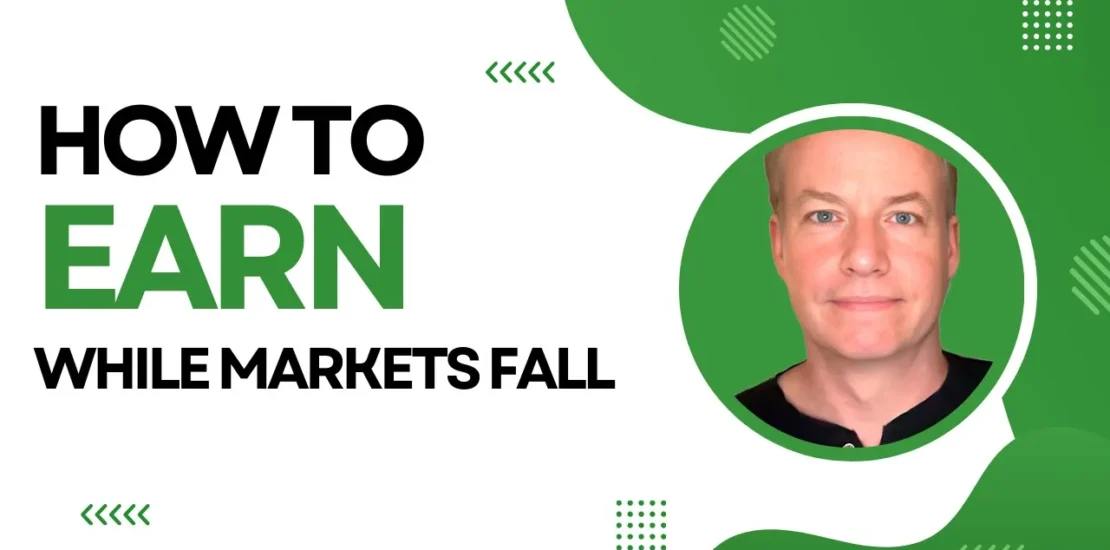- May 5, 2025
- Posted by: Mark S
- Categories: Passive Income, Trading Article

Feeling worried about the market’s wild swings? You aren’t alone.
Finding the right balance between safeguarding your investments and still creating consistent cash flow isn’t a walk in the park.
Imagine a world where you can both protect yourself from market falls and still make money.
Good news: You can. This is all thanks to ETF hedging, which lets you guard your wealth against market hits while pocketing passive cash flow.
Here’s what we’re diving into:
Understanding ETF Hedging and Its Importance
ETF hedging might sound fancy, but it’s really just a way to protect your stuff. It’s like having an umbrella on a rainy day.
When the market is unpredictable, hedging with ETFs can keep your investments dry, so to speak.
Think of it as a safety net where you don’t have to give up making some cash on the side.
How Covered Call ETFs Can Create Passive Cash Flow
Keep the income rolling, even when times aren’t great.
Covered call ETFs are middlemen that buy stocks and then earn money by selling call options.
Here’s the kicker: they pass on this cash flow to you as dividends.
The beauty is you get this regular payout without much hassle. It’s almost like having a little ATM in your portfolio that keeps churning out money while you sit back.
Meet QQQH and SPYH from NEOS
Why should you care about QQQH and SPYH?
These are new covered call ETFs worth your attention. Picture them as solid options in a world filled with uncertainty.
Both are designed to be smarter than holding QQQ or SPY by themselves when things get shaky.
They’re not immune to losses, sure, but they can lessen the blows. In wild markets, that alone is a huge win.
Why These ETFs Might Be Better in Rough Markets
In a stormy market, who doesn’t want a little extra security? Holding QQQ or SPY by themselves might feel like holding onto wildcards.
But with QQQH and SPYH, you gain a degree of predictability. When everyone else is on edge, you’ll have a strategy with a bit more stability baked in.
While individual stocks can swing wildly, these ETFs are built to generate income regardless. This helps your portfolio stay a bit more even-keeled.
They also will use special options strategies (that you will never have to do) in order to hedge against some of the downside when the markets go down or tank hard. Your losses will be limited and reduced in difficult markets.
Get Paid Every Month
Every month you will receive a distribution regardless of how the markets are performing. You can withdraw your distributions and use it to pay bills, make other investments or just park it in cash. You can also reinvest and compound by using these distributions to continue to dollar cost average into more and more shares of your QQQH or SPYH.
These insights pave the way for a smarter approach. If you’re new to this, stay tuned. A world where you manage the bumps and still earn is possible. And we’re here to show you how.
Stay tuned for part two in this series, where we dive into the limitations of these ETFs, and why having a clear grasp of these tools can ramp up your investment success.
Make sure you keep an eye out for that!
Limitations of Covered Call ETFs
No investment is perfect, and covered call ETFs come with their own set of limitations.
While they sound like a dream, it’s important to know what you’re getting into.
One big limitation is the capped upside potential. Basically, if the stock prices soar, you won’t fully enjoy the ride. The reason? You’ve sold call options, meaning you capped how much you can profit as the ETF must sell at a set price if the buyer executes.
Another thing to consider: These ETFs aren’t bulletproof in falling markets. They give some cushion, thanks to the premiums gained from selling options. But in a big market drop, they’d still slide.
What These ETFs Can’t Do
Let’s clear up some common misconceptions.
Covered call ETFs don’t make decisions for you. They won’t tell you how much to allocate in your portfolio, when to jump in or out, or offer the kind of flexibility active traders might look for in a volatile market.
They are great at what they do: generating income and offering some downside protection. But they aren’t the whole toolbox.
You’ll need to decide how they fit into your larger strategy. And if timing matters to you, then staying informed or using tools to assist with timing might still be essential.
Setting Yourself Up for Investment Success
Knowing the strengths and limitations of these tools can genuinely set you up for success.
Understanding how and when to use ETFs like QQQH and SPYH can be a game-changer in your investment journey.
These aren’t meant to be standalone stars but strategic parts of your investment ensemble. Knowing when to lean on them and when to back off can make a significant difference.
Exploring your broader financial goals and how these ETFs fit, you’ll likely find that they can be powerful complements to your strategy.
Why Timing and Management Are Vital
Timing really is everything when it comes to investing.
Our ETF Income Accelerator is launching shortly to help you time your investments better.
Why’s that important? Because while covered call ETFs offer benefits, knowing when to step in and out can really maximize potential gains.
This strategy is all about making that easier for you—simplifying the timing and management side of things.
And, it has proven itself well during the rise, declines and recoveries we’ve seen here in 2025.
With this newfound understanding of ETF hedging and covered call ETFs, you’re better prepared to make confident investment decisions.


